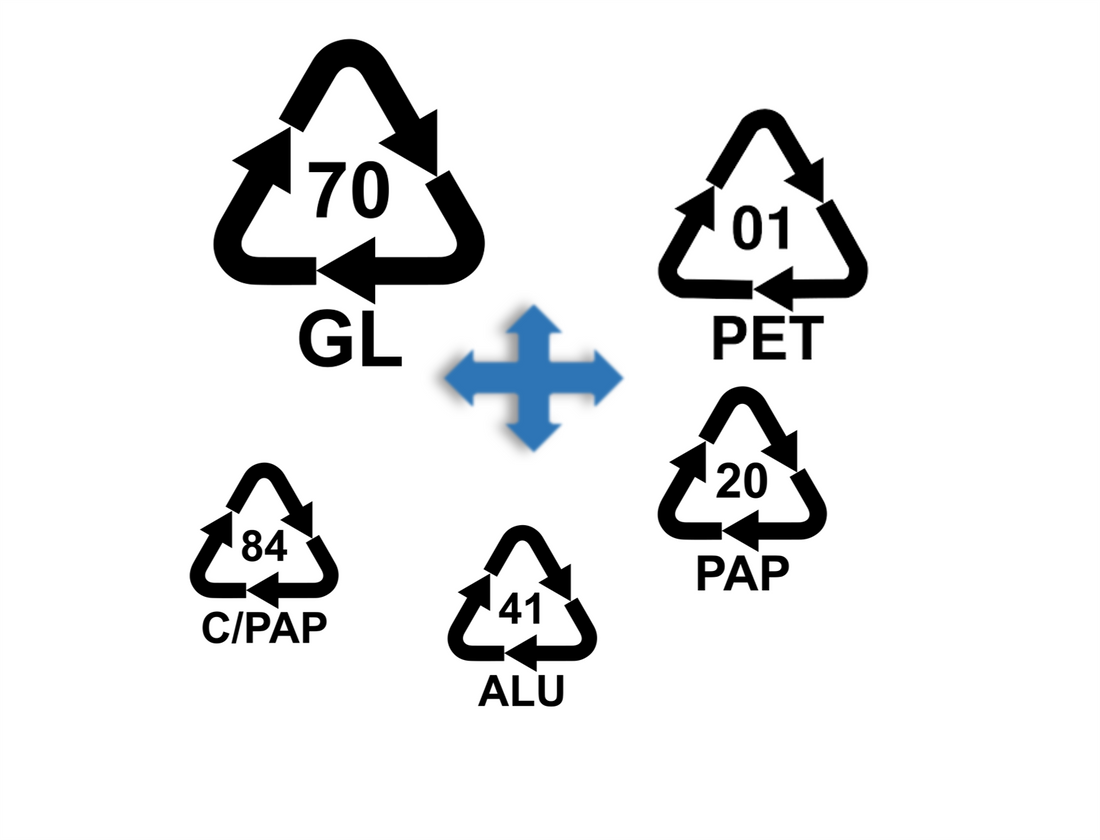Thanks to our experience in the field, we always try to develop the best solutions in terms of environmental impact as well.
Below are some interesting insights into sustainability issues that we are very attentive to, namely:
- PET containers:
- PET recycling and reuse has been very solid in Switzerland for more than 30 years. The undersigned company has been a pioneer in PET recycling by supporting the PRS Recycling Schweiz association since its existence (1992). The latter is actually in charge of Swiss-wide management (https://petrecycling.ch/). The amount of PET recycled in Switzerland is between 82% and 90%. Given the robustness of the cycle some cooperatives have moved in the direction of PET containers for milk as well (https://www.20min.ch/story/schon-bald-koennte-milch-nur-noch-in-der-pet-flasche-erhaeltlich-sein-437332750796).
- Recycled PET can be reused multiple times in different sectors (see also textiles and the automotive industry)
- In any case by virtue of the report issued by the federal department of environment here attached "link" the PET container was found to be the most suitable material for beverage packaging from the perspective of ecological balance and therefore the most sustainable container.
- Glass containers:
- Glass has been on the market for a long time and is a fairly well-known material. With a clearly higher cost, it has slightly higher recycling values than PET.
- VetroSwiss is the Swiss-wide recycling association (https://www.vetroswiss.ch/)
- TetraPak containers (carton brick):
- Definitely an interesting business model under the TetraPak company. The latter provides containers and bottling machinery. So the latter operates a kind of monopoly.
- The container consists of cardboard on the outside and a layer of aluminum (reinforcing) and a PET layer on the inside to ensure food contact (similar to alu containers). Some tetrapack containers (see milk) respectively cardboard bricks even have a plastic end cap that must be removed as part of recycling, creating significant problems for said process.
- Recycling is a bit critical, since already on the container there is a symbol that it can be thrown in the regular trash. Separation of the various layers is quite complicated. TetraPak itself operates a few recycling facilities at the European level, however even in its sustainability reports it does not report concrete recycling values (except as mid-term values). The impact furthermore of colors, the printing surface being very large, is considerable. Consider that the choice was made to remove cap printing (Coca Cola has done so in some nations), as it was impacting CO2 at the level of tons produced per year. I point you to an interesting Italian site on the circular economy (https://economiacircolare.com/cartoni-bevande-brick-riciclo-europa-italia/).
- The tetrapak container may be subject and airtightness of the container not complete if the gluing of the carton is wrong.
- Alu containers:
- Type of container that has become almost a trend at the US level. The bottle consists of aluminum foil on the outside, and there is a PET layer on the inside to ensure food contact.
- Since the PET layer is much finer than that of a regular PET bottle, it is scientifically legitimate to think of a release of microplastics on first use that is certainly greater, although still below threshold levels (which are very low).
- It is not well developed in Europe. It is a feasible solution but with high numbers.
- Alu recycling in Switzerland is certainly sound and done through Swiss Recycling, however having more than one material in the same bottle will certainly create partial contamination in the recycled Alu.
- The sustainability of Alu bottles is doubtful, as if all bottling industries were to choose it, it would create a major market imbalance toward especially the automotive sector.
Of course as a company we are open to any discussion and ready for any change (even anticipating it), but to date we cannot scientifically and technically justify that "avoiding PET/glass" means being more sustainable.
Team Tamaro Drinks SA

